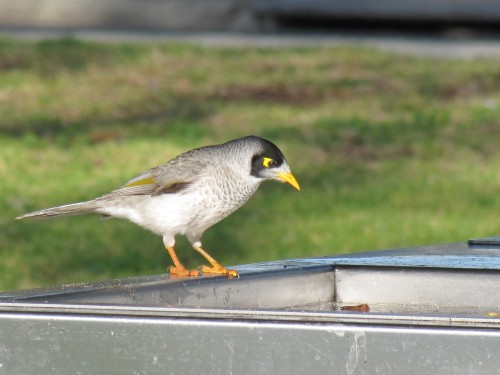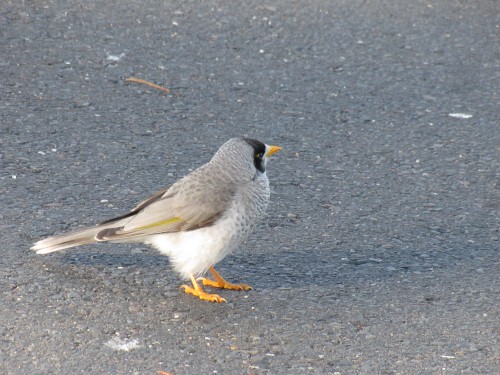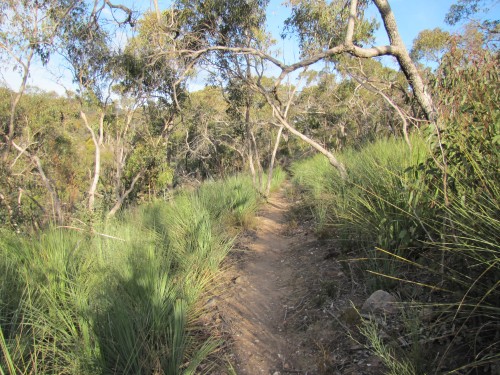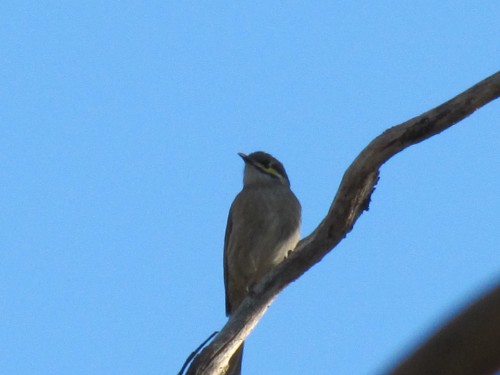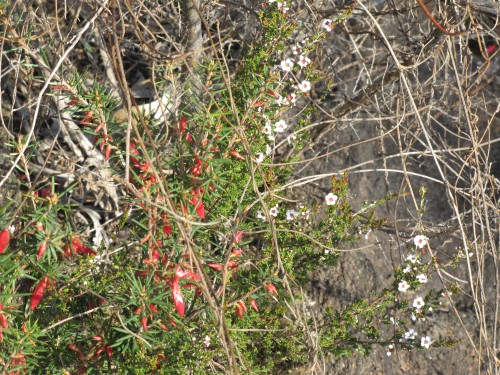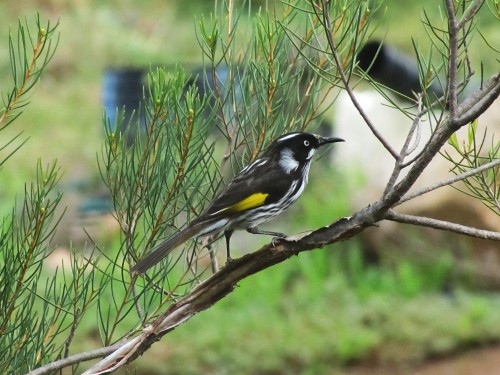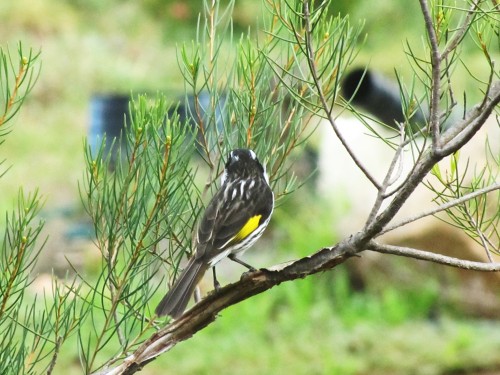Noisy Friarbird and a few other birds
On our current trip to Sydney to visit family, we stopped a few times along the way. As I said yesterday, the journey is over 1300km, so we need to stop a few times for fuel and to change drivers. We also stop occasionally for a cup of tea and a meal break. On these occasions we usually choose a place well away from towns and in a bush setting; the birding is often better.
On the second morning of our trip we stopped at an unnamed rest area on the side of the Sturt Highway between Hay and Narrandera, NSW, in the locality of Tubbo Station. While having morning tea and a cuppa I saw a number of bird species, including Australian Ravens, Australian Magpies, Willie Wagtails, Black-faced Cuckoo-shrikes, Grey Shrike Thrush, White-winged Choughs and the tiny Weebill. All lovely birds but very common in this area, and all birds I’d seen many times while driving along.
We also saw several Yellow Rosellas, a beautiful bird and less widespread than many parrots. Another interesting bird is the Apostlebird, one I always enjoy seeing on the journey over to Sydney. Undoubtedly the highlight of this brief stop was to see several Noisy Friarbirds, one of the honeyeaters of Australia. While this is a common species in the eastern parts of Australia, it’s not one I’ve seen very often, making it an extra special sighting. I didn’t get a photo of it, but you can read more about this species and see a photo here.
Noisy Miners, Sturt Reserve, Murray Bridge
The Noisy Miner, one of a very common native honeyeater species, is something of an enigmatic bird in our area. It is common almost everywhere, from gardens to parks, along the river and roadside vegetation and in nearby farming land. Yet I’ve never recorded this species on our five acre block which is about five kilometres from where this photo was taken.
My records go back almost 30 years and I only have one very dubious record of the species near our home. It was based entirely on call, but ever since I have doubted this record as being correct. I became a little excited a few weeks ago when I saw about a dozen in roadside trees along the nearby road where I go for my daily walk. So far, they haven’t ventured on to our land. One day, perhaps.
In reality, if they do become a resident species I probably won’t be all that pleased. They can be a little pest where fresh fruit is concerned, and they can also be very aggressive towards most other species, driving the smaller ones away and taking over feeding zones and nesting sites.
Birding in Hale Conservation Park, Williamstown
Last Saturday I had a meeting in Gawler which is just over an hour’s drive from home. I had a little time on my way home, so I stopped for a hour at Hale Conservation Park near Williamstown in the Mt Lofty Ranges. We often drive past this park going to or from our daughter’s home in Clare, but we’ve only ever stopped a couple of times. This time I had a hour of birding on a lovely sunny winter’s afternoon.
The birding was a little slow with only a handful of species obvious, mostly calling. A few days ago I showed a photo of a Scarlet Robin (click here) that obligingly posed near me. I saw quite a few Yellow-faced Honeyeaters flitting around in the tree tops, but none settled close enough for a decent photo. The best of a poor set of photos is shown below. This is the best photo I have of this species, which probably means that I need to get out birding more often seeing it is quite a common species.
The final photo on today’s post is a close-up of some of the wildflowers growing in the park. I must visit again in the springtime when plenty of native plants will be in flower.
Some fellow writers and a Scarlet Robin
Today I attended the meeting of a writers’ group to which I belong. It was held in the home of a fellow writer who lives in Gawler, about an hour north of Adelaide and just over an hour’s drive from my home. It was an inspiring time hearing about the projects of my colleagues and the discussion lasted several hours – until the lunch food beckoned. The talk still continued over the meal.
On my way home I decided to do an hour of birding in Hale Conservation Park, just a few kilometres from Williamstown in the Adelaide Hills. It had been a few years since I’d walked through parts of the park. Despite the welcome sunshine, birdlife was a little slow. A few birds were calling but I didn’t see much. Eventually, just as I was about to turn back towards the car park, I saw a group of honeyeaters feeding in several trees near the path. They were Eastern Spinebills, New Holland Honeyeaters and Yellow-faced Honeyeaters. Most didn’t sit still long enough to focus my camera on them, though I did manage a few shots of the Yellow-faced.
As I was following them around, a male Scarlet Robin came and perched on a branch less than two metres from me. I had about three seconds to zoom, focus and press the shutter. The bird was gone just as quickly as it had come; I didn’t see it again. I’m so thankful that I managed to get it more or less in focus.
Sometimes you just get lucky!
Good birding.
Further Reading:
New Holland Honeyeaters
Sometimes everything just works really well when taking photos of birds.
Here is a case in point.
I looked out of the window from my office and saw this New Holland Honeyeater perched on one of the branches of a bush in the garden. I grabbed my camera and clicked; I was quite pleased with the result.
Sometimes you do win them.

